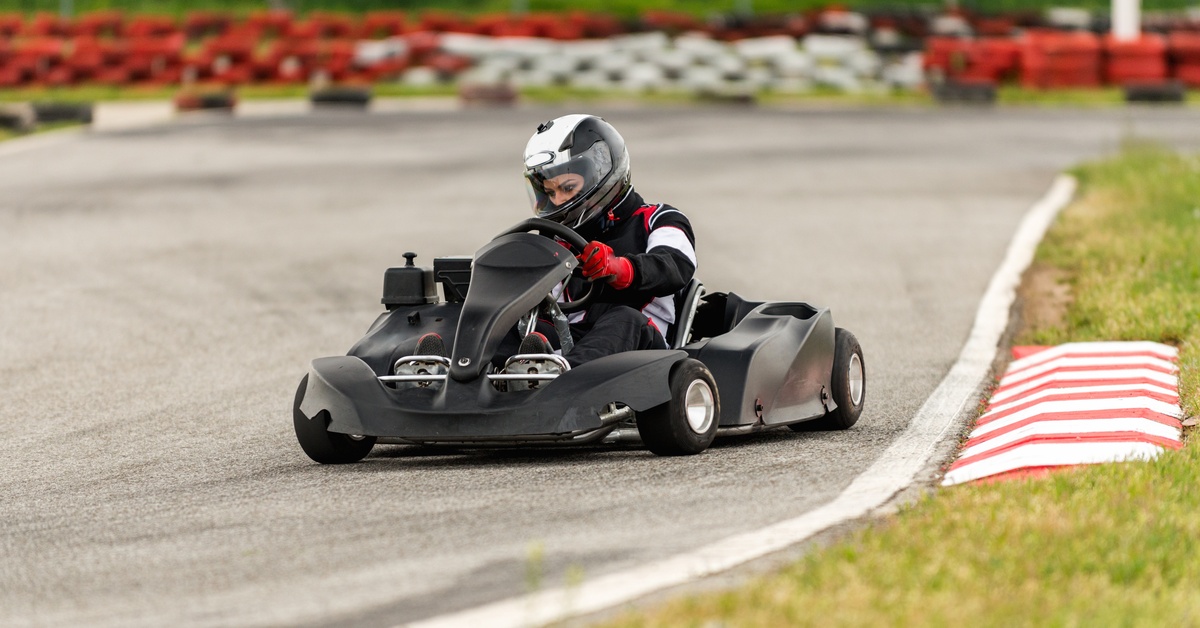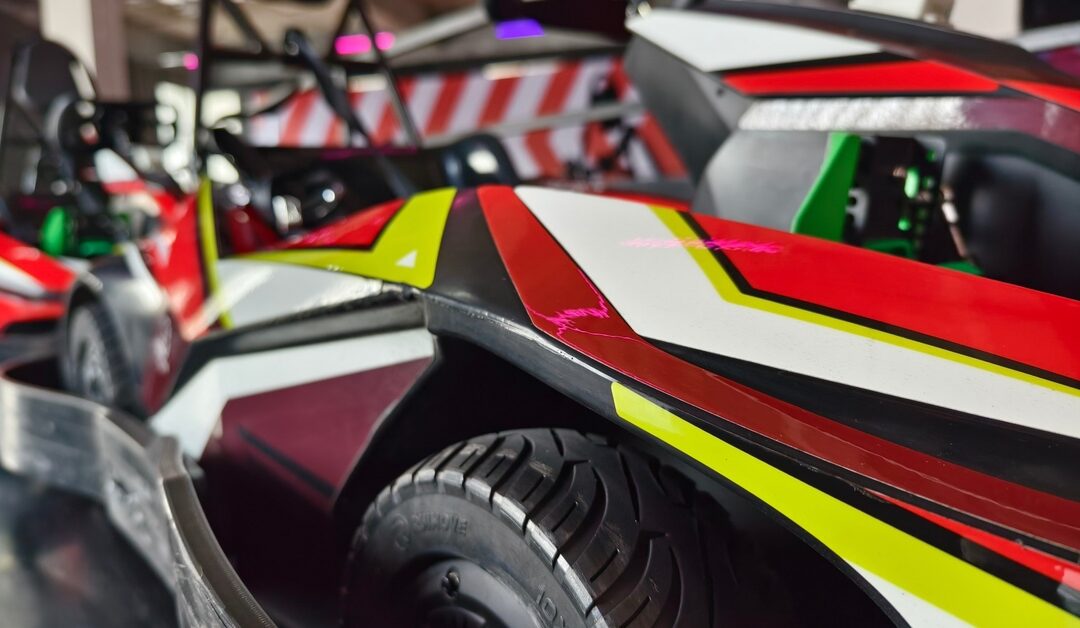Go-kart racing delivers fast-paced fun, and that fun starts with a choice. Whether you’re planning a corporate team-building event, organizing a birthday race for friends, or competing for bragging rights, one decision shapes the entire experience: electric or gas go-karts? Each option brings serious speed and energy, but the way they drive, sound, and perform sets them apart in more ways than one.
Acceleration and Speed: Electric Torque vs. Gas Power
Electric go-karts deliver power the moment your foot touches the pedal, thanks to direct-drive motors and high torque output. Electric motors deliver instant torque that produces sharp bursts of acceleration for quick launches during corner exits and short sprints. On tight tracks with frequent turns and limited straightaways, electric karts gain a competitive edge through a throttle response that favors split-second gains.
In contrast, gas-powered karts rely on combustion engines that build power more gradually as engine revolutions increase. Rather than surging forward immediately, gas karts reward smooth throttle control and patience as drivers let RPMs climb through each gear. While the delay feels less aggressive off the line, gas engines reach higher speeds on longer tracks where sustained acceleration matters more than quick bursts.
Electric karts excel in short-distance performance, especially when exiting turns or overtaking opponents in confined lanes. Gas karts, however, favor open layouts that reward top speed and long stretches of power delivery. The difference between electric and gas go-karts shows up clearly when track designs reward either fast torque application or extended throttle management.
Sound and Vibration: A Quiet Drive or Roaring Engine
Electric go-karts operate almost silently, aside from the high-pitched whir of the motor and the sound of tires gripping the track. A quiet ride creates a more focused atmosphere, where drivers hear every movement and feel every adjustment through the wheel. The lack of engine noise also makes it easier to communicate in pit areas or during instruction sessions.
Gas go-karts deliver a loud, raw sound that many drivers associate with real racing. The engine growls, the chassis vibrates, and the entire ride feels more physical from the first turn. The engine noise and chassis vibration combine to heighten the racing experience, especially during acceleration, braking, and tight cornering.
While electric karts offer a smoother and quieter experience, gas karts create a visceral connection between the driver and machine. Event organizers often select electric for indoor venues or locations with sound restrictions. Outdoor tracks typically favor gas for the aggressive energy it brings to every lap.
Handling Differences on Tight and Open Tracks

Electric go-karts distribute weight evenly and sit lower to the ground, thanks to their battery placement and motor design. That layout improves balance and gives drivers more control during high-speed turns. On technical tracks with sharp bends, electric setups allow for tighter cornering and smoother transitions.
Gas karts often feel heavier due to the engine and fuel tank, especially when fully fueled at the start of a race. The added weight shifts during turns, requiring drivers to steer more aggressively and manage their lines more carefully. Gas-powered karts challenge drivers to maintain precise control under shifting weight and speed.
On short, twist-heavy tracks, electric go-karts respond with precision and agility. But on long tracks with high-speed sweepers, gas karts shine by carrying momentum through every curve.
At Speed Sportz Racing Park, we offer go-karting in Houston that residents can rely on for a fun, safe, and thrilling experience that showcases both electric and gas options on a professionally designed track. Understanding how each kart responds to various layouts helps drivers play to the strengths of the machine.
Setup and Startup: Simplicity vs. Warm-Up
Electric go-karts power on instantly. Drivers flip a switch, press the pedal, and start racing without delay. The system requires no choke, no idling, and no warm-up time. That makes electric ideal for quick sessions, back-to-back races, or environments where uptime matters.
Gas go-karts require more setup before hitting the track. Operators must check oil and fuel levels, inspect fuel lines, test the throttle linkage, and warm up the engine to racing temperature. Engine warm-up, fuel and oil checks, throttle linkage testing, and line inspections all take time and attention, especially in colder weather or during busy days.
For casual racers or large group events, electric systems reduce wait times and simplify scheduling. For serious racers or competitive kart leagues, the gas setup process becomes part of the ritual and prep. Each format offers reliability, but electric karts deliver speed from the moment you sit down.
Refueling vs. Recharging: Track Time and Turnaround

A quick top-off in the pit area allows gas karts to return to the track within minutes. Fast pit stops allow gas karts to cycle through quickly, keep the lineup moving, and maintain a consistent race schedule without delays.
Electric karts recharge between races and require longer intervals to power up fully. Some tracks rotate between multiple battery packs or limit session times to match the available charge. Charging time, battery capacity, and the number of available charging stations directly impact how often each electric kart can return to the track and how race sessions are spaced throughout the day.
If constant action matters, gas karts keep the pace moving without long breaks. If quiet operation and clean energy hold more value, electric setups provide a modern alternative. Both work within structured schedules, but each impacts the flow of racing in different ways.
Cost To Operate and Own: Where the Money Goes
Electric karts cost more up front due to battery systems and motor technology. However, their lower maintenance needs and reduced energy costs make long-term ownership more predictable. Event operators often recoup costs through lower repair frequency and simpler upkeep routines.
Gas karts sell for less initially, but their ongoing maintenance, fuel use, and part replacements add up. Owners must budget for routine service and occasional rebuilds, especially when karts see frequent use. Hobbyists who enjoy hands-on tuning often accept those costs as part of the experience.
For track managers, the choice depends on throughput, budget, and available labor. For individual racers, it comes down to the preference between convenience and customization. Either way, each format brings distinct financial considerations to the table.
Where the Difference Between Electric vs. Gas Go-Karts Matters Most
The difference between electric vs gas go-karts becomes most noticeable when event goals and track features align with one format over the other. If your group values clean energy, quick starts, and smoother handling, electric go-karts provide everything you need for a fast-paced event. If raw engine power, longer track layouts, and physical driving dynamics appeal to you more, gas go-karts deliver that extra punch.
Understanding how both types behave helps you match the kart to the moment and gives every driver a better time behind the wheel. Book your next race with Speed Sportz Racing Park and feel the rush of true track performance. We provide go-karting that Houston drivers can trust for clean facilities, real speed, and an unforgettable ride every time.


